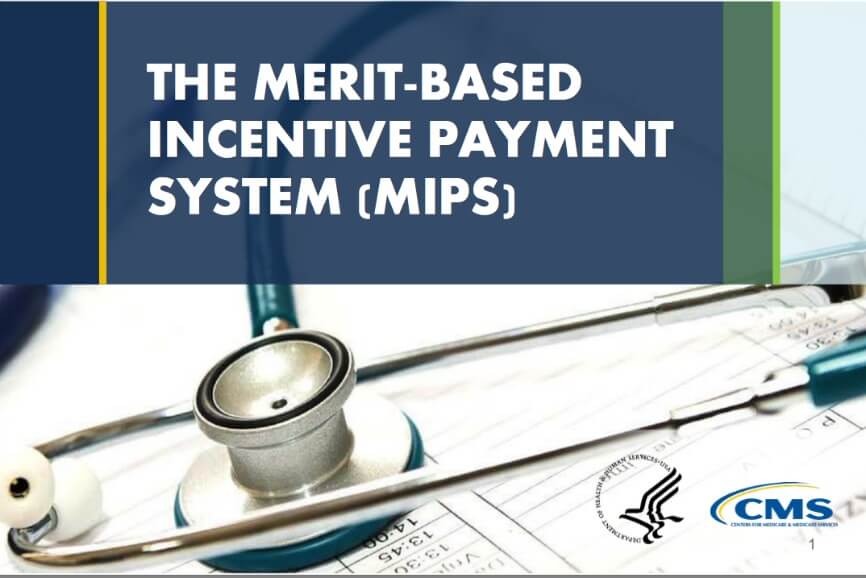Medicare Access and CHIP Reauthorization Act (2015) and Value-Based Reimbursement
The Medicare Access and CHIP Reauthorization Act (MACRA) passed by Congress in 2015, removed the Sustainable Growth Rate (SGR) assessment used to control Medicare spending. This change removed the requirement of Congress to vote on and authorize changes to the physician fee schedule. The Physician Quality Reporting System (PQRS) transitioned into the Quality Payment Program (QPP). Medicare now rewards high-value, high-quality Medicare clinicians with payment increases – while at the same time reducing payments to those clinicians who are not meeting performance standards.
There are two tracks within QPP, either the Alternative Payment Model (APM) or the Merit-based Incentive Payment System (MIPS), which combines the previous PQRS with Meaningful Use (MU) and the Value-Based Modifier (VBM). APMs provide an avenue for customized payment based on specific clinical conditions, care episodes, or populations. Individual providers within an APM are also required to report MIPS measures when the individual provider does not reach a predetermined quantity of episodes.
Most physicians and physician groups submit MIPS rather than APMs. Alternative Payment Models require participation in Accountable Care Organizations, population health programs, or bundled payment models, in which many specialists or smaller practices do not participate.
Eligible Professional:
Eligible professionals required to submit MIPS information are identified by a unique TIN/NPI combination and include any of the following:
1. A physician
2. A practitioner (as described in section 1842(b)(18)(C) of MACRA)
3. A physical or occupational therapist or a qualified speech-language pathologist
4. A qualified audiologist (as defined in section 1861(ll)(3)(B) of MACRA)
Collecting MIPS:
Providers may earn an adjustment to their reimbursement rates from Medicare based on different performance categories. A provider’s score will range from 0 – 100 points.
There are six (6) collection modes for reporting of MIPS quality measures:
• Electronic Clinical Quality Measures (eCQMs)
• MIPS Clinical Quality Measures (CQMs)
• Qualified Clinical Data Registry (QCDR) Measures
• Medicare Part B claims measures
• CMS Web Interface measures
• The Consumer Assessment of Healthcare Providers and Systems (CAHPS) for MIPS Survey.
MIPS Reporting Measures:
The MIPS program contains four (4) areas of data or measure collection. These four (4) areas have specific weights towards the 100 points possible. Below are the areas for MIPS collection:
- Quality
- Collect data on six (6) metrics including one outcome measure
- Report metric on minimum of 70% of qualifying patients
- 40% of the final score
- Promoting Interoperability
- Submit collected data measures from each of the four (4) objectives
- Same contiguous 90-day time period for each objective
- 25% of the final score
- Improvement Activities
- Submit one (1) of the following combinations of activities:
- Two (2) high-weighted activities
- One (1) high-weighted activity and two (2) medium-weighted activities
- Four (4) medium-weighted activities
- Activities generally have a 90-day continuous reporting period
- 15% of the final score
- Submit one (1) of the following combinations of activities:
- Cost
- Evaluated based on cost measures that achieve minimum number of episodes
- Compared performance based on benchmarks established during the performance period and not against historical benchmarks
- 20% of the final score
Patient-Reported Outcome Measures (PROM) are considered a high-priority measure within the Quality and Improvement Activities of the MIPS reporting structure. Collection of PROMs using approved, reliable and validated measures meets certain high-value requirements within the Quality section of MIPS. Collection and reporting of these measures is simplified using CODE Technology’s end-to-end platform and service.
Patient-Reported Experience Measures (PREMs) and PROMs both meet the requirements for high-value Improvement Activities. CODE Technology will work with your practice to develop, manage, collect and report on PREMs and PROMs.
The MIPS performance year begins January 1, 2021 and extends through December 31, 2021. All reporting must be completed by March 31, 2022. Once scores are determined, payment adjustments will be calculated and take effect in 2023. Negative adjustments will be determined and take effect in 2023 for those providers at lower MIPS scores.
Schedule A Call With a PRO Expert!
Need more help with your PRO related questions? CODE can help! Schedule a call with a CODE expert today to get you on your way to better harnessing your patient reported outcomes.



